Severe winter weather can cause significant damage to your home; some estimates find that winter storms cause more than $1 billion in damage each year. To avoid costly repairs this winter, help prepare your home for winter weather with these five tips.
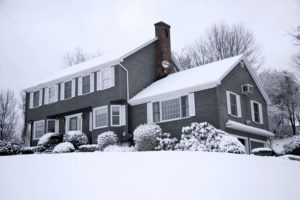 1. Inspect your fireplace
1. Inspect your fireplace
Whether you have a fireplace as a primary heat source or use one to supplement the furnace on cold days, regular chimney maintenance is extremely important. A fireplace sweeping and inspection can keep your fireplace burning safely and efficiently all winter long.
During a fireplace sweeping, the chimney sweep will remove soot, ash, and flammable creosote from the flue. In addition to preventing chimney blockages and allowing the chimney to draft effectively, removing creosote is extremely important in preventing chimney fires. Because it is so flammable, creosote buildup in the flue can be accidentally ignited by stray sparks or embers from the fireplace; removing creosote through annual chimney sweepings can reduce the risk of a chimney fire occurring.
As part of the chimney inspection, the chimney sweep will assess all interior and exterior portions of the chimney. This allows them to check for signs of damage or deterioration, such as:
- Damage to or missing chimney cap
- Signs of animal entry
- Tree limbs or branches overhanging the chimney
- Cracked or crumbling chimney masonry
- Loss of watertight seal on chimney flashing
- Staining on or around the chimney
- When caught early, chimney damage can be easily repaired by a skilled chimney technician.
2. Seal leaky doors and windows
Gaps around doors and windows can allow cold air to seep into your home during winter months. In addition to creating cold pockets in your home, this forces your furnace to work harder to keep your home at a consistent temperature. According to the US Department of Energy, reducing drafts can help reduce energy costs by up to 20% during winter months.
Adding new weatherstripping is an easy way homeowners to stop conditioned air from seeping out of their home. There are a variety of weatherstripping choices available, each with their own pros and cons.
- Bronze weatherstripping. Bronze weatherstripping is extremely durable and can last for decades. However, it is pricier than other options – and can be time-consuming to install.
- Self-stick plastic weatherstripping. Extremely easy to install, self-stick plastic weatherstripping needs to be replaced often.
- Adhesive-backed EPDM. This type of weatherstripping is more durable than self-stick plastic but is easier to install than bronze. Most EPDM weatherstripping can last for up to 10 years.
- Don’t forget to seal around the exterior of doors and windows with latex caulk!
3. Keep pipes from freezing
Consistent temperatures below zero can wreak havoc on plumbing systems – especially for exterior pipes. While constantly moving water and warmer interior temperatures helps protect interior plumbing, exterior pipes are prone to cracking. In addition to releasing hundreds of gallons of water in a single day, the leaks from cracked pipes can lead to serious structural damage to a home.
Begin by shutting off external pipes at the beginning of winter. Check pipes again after a few days to ensure they have fully drained and to flush any remaining water out of the system. Consider wrapping insulating tape around any exterior pipes or pipes in basements or crawlspaces to help prevent cracks. Likewise, invest in exterior faucet covers to cover and project exterior spigots.
4. Clean the dryer vents
In winter it is too cold to dry laundry on the line or on a rack; this often leads to dryers being used more. Ensure your dryer is operating safely and efficiently by having the dryer vents cleaned.
Each year, more than 15,000 house fires are caused by clogged dryer vents. When dryer vents become clogged, dryers may stop operating efficiently, take longer than 1 cycle to dry, create excessive lint, or have lint that is visible from exterior vents.
To reduce the risk of a dryer fire, vents should be cleaned once per year. This is especially important for homes or buildings with longer dryer vents; the longer the dryer vent has to stretch, the more lint can become trapped inside.
5. Prevent ice dams
In areas of the country like Minnesota, significant snowfall is a part of life during the winter. Protect your roof from damage by helping prevent ice dams from forming. Ice dams form at the edge of the roofline and prevent melting snow from draining.
Ice dams form on the roof when warm air in the upper floors or attic melts snow or ice on parts of the roof – but not the eaves. As this snow melts prematurely, it freezes again on a colder part of the roof, such as the eaves; this creates the ice dam that can back up the flow of melting water and lead to roof damage.
There are several ways that ice dams can damage the roof. First, backed up water can sit on shingles, leaking through the roof and onto insulation and drywall. Ice dams also put downspouts and gutters at risk; because they sit at the edge of the roofline, a large ice dam can pull gutters down with it if it falls.
Ice dams can be carefully removed by breaking away small chunks at a time or using tools such as a rake or shovel to remove snow from the roof after a storm. However, the best solution to ice dams is to address the underlying cause: parts of the roof where snow melts too quickly due to leaking warm air. Adding insulation, keeping all parts of the home a consistent temperature, and preventing air leaks in the attic can all help prevent ice dams from forming.
At Jack Pixley Sweeps, we are used to dealing with cold Minnesota winters! Contact us today for information on how we can prepare your fireplace and chimney for the winter.
At Jack Pixley Sweeps, safety is our top priority. Through high-quality fireplace and chimney services and client education, 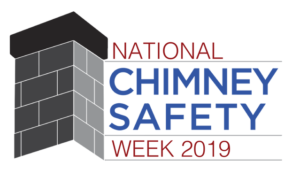 we aim to keep our friends and neighbors’ homes safe, warm, and efficient. We are proud participants in Chimney Safety Week 2019.
we aim to keep our friends and neighbors’ homes safe, warm, and efficient. We are proud participants in Chimney Safety Week 2019.
In the United States, there are more than 22,000 chimney fires each year, endangering lives and costing more than 125 million dollars in damages. The goal of Chimney Safety Week is to help reduce the number of accidental chimney fires by educating both homeowners and chimney professionals about the latest trends and best practices in fire safety and prevention.
Facts about chimney fires
Chimney fires are a risk when using any fireplace, stove, or insert. However, chimney fires can be prevented by chimney sweepings, inspections, regular maintenance, and following safe burning guidelines. The following are some eye-opening facts about chimney fires many homeowners may not know.
- The majority of chimney fires go undetected. Many chimney fires are so small they go undetected. This does not mean, however, that the chimney is not damaged; no matter how small, chimney fires can cause serious damage to the flue.
- Chimney fires can reach up to 2,000 degrees
- Creosote buildup is the main cause of chimney fires. Creosote is a naturally occurring – and extremely flammable – byproduct of combustion. When not removed from the chimney during chimney sweepings, creosote can accumulate in the flue; stray sparks or embers from the fireplace can then cause creosote to ignite and lead to a chimney fire.
- Signs of a chimney fire include a discolored chimney cap, warped metal on the damper, creosote flakes in the flue box, cracks in the masonry, and more.
Fireplace safety tips
Our fireplaces and chimneys help keep our homes warm, but they can be dangerous when poorly maintained or when used incorrectly. The following are just a few safety tips to help prevent accidental chimney fires,
- Have the chimney swept at least once per year. Chimney sweeping is the single most important part of chimney maintenance and fire prevention. A chimney sweeping by a certified professional removes soot, ash, and creosote from the fireplace and flue; this ensures that the chimney can vent safely and efficiently no matter the season.
- Do not leave fires unattended. No matter the size or experience level of the homeowner, fires should never be left unattended. This safety tip is especially important in homes with pets or small children who could easily be injured by fire. Glass doors, grates, or fences can be used to help keep little hands – and paws – away from the fireplace when it is in use.
- Keep décor away from the fireplace. Hanging stockings on the mantle may be one of the most popular ways to decorate for the holidays, but home décor should always be removed before using the fireplace. Keep carpets, furnishings, and other décor at least three feet away from the fire to prevent scorch marks – and accidental fires.
- Properly store fireplace ashes. Fireplace safety doesn’t end when the fire goes out. Proper ash storage is an important part of preventing fires in trashcans or dumpsters; ashes should always be stored in a dedicated metal container and should not be mixed in with household trash.
Using these tips and having your chimney swept annually will help you decrease your risk of a chimney fire and keep your family and home as safe as possible. For questions, call Owens Chimney today!
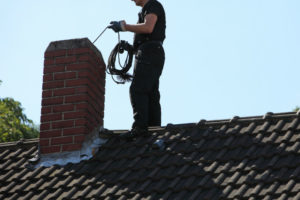 While the fall burning season may have just started, it’s never too early to start thinking about spring. If you haven’t had your chimney swept or inspected this season, now may be the best time to have it done; however, now is also an excellent time to have new chimney caps installed. Not only will they protect your chimney this winter, but they can keep animals out when spring arrives.
While the fall burning season may have just started, it’s never too early to start thinking about spring. If you haven’t had your chimney swept or inspected this season, now may be the best time to have it done; however, now is also an excellent time to have new chimney caps installed. Not only will they protect your chimney this winter, but they can keep animals out when spring arrives.
The importance of preventative maintenance
Fireplaces and chimneys are built to last, but they need regular cleanings and inspections in order to burn safely and efficiently. By having regular preventative maintenance performed, you can ensure your fireplace will burn safely for years to come.
One of the most common – and most important – parts of fireplace maintenance is an annual chimney sweeping. The Chimney Safety Institute of America recommends that all homes should have their chimneys swept at least once per year, regardless of how often you use your fireplace. Regular chimney sweepings remove creosote, a highly flammable byproduct of fuel burning fires that accumulates in the chimney over time. Likewise, regular sweepings ensure there are no other blockages in the chimney that prevent proper drafting or create a fire hazard.
Chimney inspections are another important part of fireplace maintenance. An inspection can help identify minor areas of damage before they turn into more serious deterioration. This is especially important for areas of the chimney that are not easily accessible or cannot be seen from street level. Chimney caps are one fireplace component that benefit from being inspected, as their damage may otherwise go unnoticed.
Chimney caps protect your fireplace system year round!
Chimney caps, sometimes known as spark arrestors or rain guards, are an important part of your chimney system; sitting at the top of the chimney, these caps have metal tops and mesh or wires sides that keep animals, debris, and moisture out while letting smoke safely draft. During the busy burning season, chimney caps protect your fireplace by keeping rain, sleet, and snow out, as well as keeping sparks from flying onto the roof or nearby bushes and trees. This protects your home – and your neighbors – from roof fires when the fireplace is in use.
Chimney caps continue to protect your home into the spring. Raccoons are especially fond of nesting in chimneys during the early spring; often taking up residence on the fireplace’s smoke shelf, they can be difficult to remove and can cause damage to your chimney system. A well installed, sturdy chimney cap cannot be pulled up by handy paws and keeps raccoons and other animals out.
Maintaining your fireplace and chimney is a year round job; make sure your system is ready for next spring by having your chimney cap inspected. If you need a new chimney cap, trust the experts at Jack Pixley Sweeps to install a cap that will keep raccoons – along with moisture and debris – out of your chimney. Contact us today to learn more about this preventative chimney maintenance.
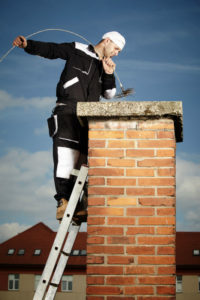 While fall may not start until September 22, cooler temperatures are already starting to arrive. This year, make sure your fireplace is ready to go when the first cold snap hits by having your chimney swept now! It’s not too late to have your chimney swept for the year; annual maintenance is an important part of keeping your chimney burning efficiently, and now may be the perfect time to have it swept.
While fall may not start until September 22, cooler temperatures are already starting to arrive. This year, make sure your fireplace is ready to go when the first cold snap hits by having your chimney swept now! It’s not too late to have your chimney swept for the year; annual maintenance is an important part of keeping your chimney burning efficiently, and now may be the perfect time to have it swept.
The importance of annual chimney sweepings
Your fireplace needs attention more than just when you’re using it – or when it isn’t working properly. Regular preventative maintenance can help lengthen the lifespan of your chimney system while also keeping your fireplace burning safely and efficiently. One of the most important – and most well-known – annual maintenance items homeowners can have done is a chimney sweeping.
During the sweeping, the chimney sweep will use brushes, vacuums, and other tools to remove soot, ash, and creosote from the firebox and flue. The removal of creosote is one of the most important parts of the chimney sweeping; creosote is highly flammable, and the accidental ignition of creosote buildup in the chimney is the leading cause of chimney fires.
According to the Chimney Safety Institute of America, all chimneys – no matter how often they are used – should be swept at least once per year. This follows the National Fire Protection Association Standard 211 which says, “Chimneys, fireplaces, and vents shall be inspected at least once a year for soundness, freedom from deposits, and correct clearances. Cleaning, maintenance, and repairs shall be done if necessary.” Whether you use your fireplace a few times each season or are burning in it every day, maintenance needs to be done at least once per year. If you use your fireplace as a primary heating source in your home, it may need to be swept more often.
Don’t forget a chimney inspection!
In addition to your chimney sweeping, a chimney inspection can be another important part of annual maintenance.
“A chimney inspection is like an annual dental check-up,” says Ashley Eldridge, Director of Education for the CSIA. “It’s preventative maintenance that helps minimize potential hazards.”
During a chimney inspection, the chimney sweep will evaluate all accessible interior and exterior portions of the fireplace and chimney. Doing this can help identify any areas of damage or deterioration, often long before the fireplace has begun experiencing performance problem. This allows problem areas to be repaired sooner, saving you money on major repairs in the future.
Chimney inspections can also be used as a diagnostic tool. If you are experiencing a fireplace performance problem such as drafting issues, ongoing leaks, or repeated animal entry, a chimney inspection can help identify the root cause of the problem.
Whether you use your fireplace once per year or every day, a regular annual chimney sweeping is the best way to protect the longevity of your chimney system. To schedule your next chimney sweeping, contact Jack Pixley Sweeps today!
Scratching and clawing are sounds no homeowner wants to hear coming from their chimney. If you do, you may have an animal trapped inside.
The presence of an animal in the chimney is more than just a nuisance; animals often endanger themselves by getting stuck, can cause serious damage to your chimney components, and can expose your family to disease. Because of this, it is important to call a chimney professional at the first sign of animal entry.
How animals get in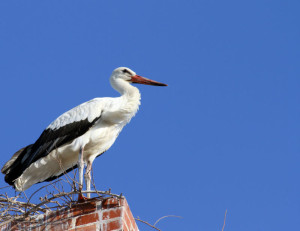
Birds, raccoons, squirrels, and a number of other animals are known for trying to find their way into chimneys. Commonly, animals are able to get into the flues of uncapped chimneys or homes where the chimney cap has been damaged. Chimney caps that are ill-fitting, have shifted, or have damaged side screens can all leave gaps big enough for animals to get into. Raccoons have also been known to claw and scratch chimney caps until they break to gain entry.
Keeping animals out
The best way to keep out of your chimney is through regular chimney maintenance. An annual chimney inspection can help spot damage to the chimney cap and other chimney components. If repairs are needed, they can be quickly and easily completed – before animals get in.
I think I have an animal in my chimney – now what?
If you hear clawing, scratching, crying, or other animal noises coming from your chimney it is important to call a chimney professional as soon as possible. While animals may be able to find their way in, most are not able to get out on their own; when trapped and disoriented in the dark, enclosed space, wildlife rescue may be needed.
It is never recommended for homeowners to attempt to “smoke out” animals. First, opening the damper to start a fire can let whatever animal is in your chimney into your home; it is much easier to get a bird out of a chimney than it is a living room! Likewise, starting a fire with an animal in the chimney can be harmful to the animal as well as your home. The smoke, heat, and gasses from the fire often kill the animals long before they are able to escape up the chimney. If there are nesting materials in the chimney, sparks and embers from the fire can cause them to ignite and lead to chimney fires.
At Jack Pixley Sweeps, we provide professional animal removal services. We identify the area the animal is trapped in and remove four bricks; this creates an area large enough for the animal to escape on its own or be removed without causing significant damage to the chimney. By having a chimney company remove the animal, we are able to not only get the animals out, but repair the damage they have caused and keep them from coming back.
The presence of an animal in your chimney endangers the animals, causes chimney damage, and can expose your family to a variety of bacteria or diseases. At Jack Pixley Sweeps, we are experts at removing animals from your chimney – and keeping them from coming back. Contact us today for more information on wild animal removal.
 1. Inspect your fireplace
1. Inspect your fireplace

 While the fall burning season may have just started, it’s never too early to start thinking about spring. If you haven’t had your chimney swept or inspected this season, now may be the best time to have it done; however, now is also an excellent time to have new chimney caps installed. Not only will they protect your chimney this winter, but they can keep animals out when spring arrives.
While the fall burning season may have just started, it’s never too early to start thinking about spring. If you haven’t had your chimney swept or inspected this season, now may be the best time to have it done; however, now is also an excellent time to have new chimney caps installed. Not only will they protect your chimney this winter, but they can keep animals out when spring arrives. While fall may not start until September 22, cooler temperatures are already starting to arrive. This year, make sure your fireplace is ready to go when the first cold snap hits by having your chimney swept now! It’s not too late to have your chimney swept for the year; annual maintenance is an important part of keeping your chimney burning efficiently, and now may be the perfect time to have it swept.
While fall may not start until September 22, cooler temperatures are already starting to arrive. This year, make sure your fireplace is ready to go when the first cold snap hits by having your chimney swept now! It’s not too late to have your chimney swept for the year; annual maintenance is an important part of keeping your chimney burning efficiently, and now may be the perfect time to have it swept.